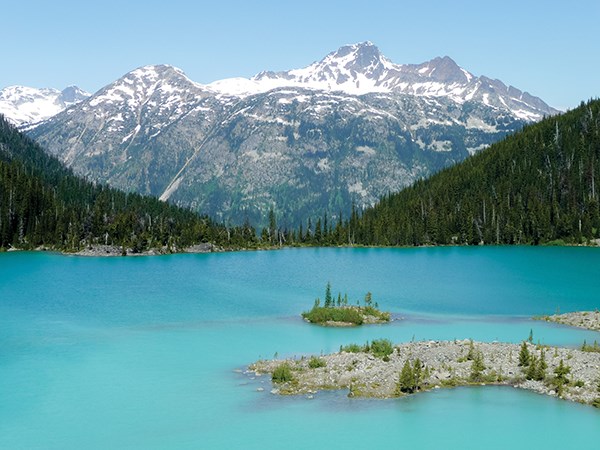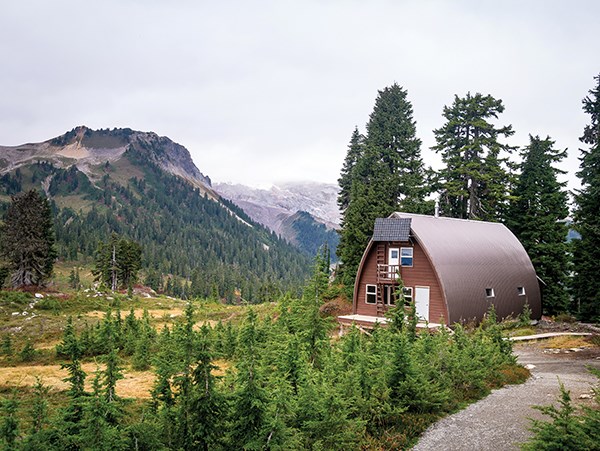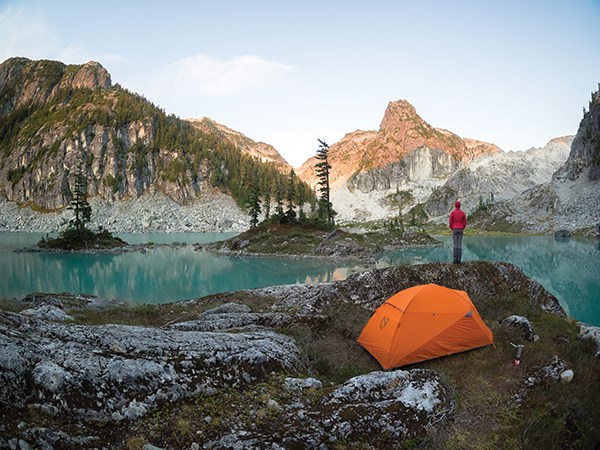With spring already upon us and the distinct feeling in the air that the seasons are beginning to change, it’s time to start thinking about warm-weather adventures in the mountains.
But how should we get ready? Should we just wing it and wait for our friends and family to invite us on their trips? What about the weather? If the summer is mostly wet and cloudy, it’s definitely going to change our objectives.
It’s easy to get into a stalling pattern, waiting for the perfect adventure and weather window to come to us and, before we know it, summer has passed, the days are getting shorter again and we’re wondering why we’re putting the tent away for the winter without ever getting to pitch it once.
My advice: Don’t wait. Start planning and preparing today for the months to come. It doesn’t have to be stressful or complicated. Rather than looking at the big task in front of you, break it down into manageable and smaller goals.
So here are a few of the ways I get ready for spring and summer hiking and camping.

The tick list
On a rainy Saturday, grab a good hiking buddy or two, a couple of guidebooks, a laptop and notepad and head to your favourite coffee shop to start devising your summer hiking tick list.
Calculate how many weekends you’ve got between now and winter and how many of those you want to spend on day hikes or backpacking trips. I usually try to make it a 50/50 split. So one weekend, I hike on Saturday, rest on Sunday. The next weekend, I go camping.
Important to the tick list is considering the driving distance. Usually I’m fine with driving two hours one way for a day trip. So I research the guidebooks for southwest British Columbia for locations within that radius from �ϰ������ϲʿ�����¼����. For an overnight trip, I’m fine with driving up to three hours one way. For a long weekend, I’ll drive up to five hours.
The next important consideration is having a Plan B tick list already in place. If it starts storming the weekend you want to climb Wedge Mountain in Garibaldi Provincial Park, maybe take a look at your Plan B. The Plan B tick list should contain easier objectives that you can easily reach that don’t have you exposed to the elements as much. On my Plan B list, I’d have trips to mountain huts like the Elfin Lakes cabin or Keith’s Hut off the Duffey Lake Road. Or camping trips to lakes where I could set up a tarp to be out of the rain, like Watersprite Lake in �ϰ������ϲʿ�����¼���� or Eaton Lake near Hope.
The next important consideration for the tick list is spreading the objectives out around your acceptable driving radius and being flexible with when you get to do them.
The reason for this is to give you a better chance of finding good weather. Sure, it might be raining in Garibaldi Provincial Park, meaning you can’t climb Castle Towers, but maybe it’s sun and broken clouds north of Pemberton so you can go camping at Joffre Lakes instead.
This is why having the list helps you out throughout the season. It won’t leave you scrambling to re-plan on a Friday night due to weather. Just find where the weather is best, find your listed adventure in that location and go.
Spitball ideas with friends, flick through the guidebooks until something jumps out at you, scribble down all the ideas and objectives and before you know it, it will be sitting in front of you, the beginnings of your best season of adventures to date.
Preparation
With the tick list in hand, it’s time to start preparing for the season.
Don’t get bogged down thinking about new gear purchases. Chances are, if your trusty old hiking boots worked last season, then they will likely be fine for this season too. Sure, your tent is a little heavy, but stronger legs will get you further than shaving a few grams off your tent poles with an expensive new one.
The most important preparation is physical. We are fortunate to have many amazing alpine environments to explore around �ϰ������ϲʿ�����¼����, but accessing them requires us to have the stamina to hike uphill for multiple hours with heavy packs.
Train for this
Thankfully, �ϰ������ϲʿ�����¼���� has several options for easily getting uphill training, including the ever-popular Stawamus Chief.
Instead of trying to go quickly with a light pack, consider going slowly with a heavier one. To add weight on the uphill, fill a four-litre jug with water, then dump it out at the top so you don’t hurt your knees on the downhill.
Another alternative is to hike the Sea to Summit trail at the Sea to Sky Gondola.
The benefit of this one is you get to ride the gondola down so you protect your knees after an even greater uphill workout than the Chief.
The right fuel
Talking about food and diets is always a tricky subject. Everyone has an opinion on what works and what doesn’t. What I can give you is my personal experience.
Proper fuelling and hydrating while out hiking and camping has lead to less fatigue on the uphill, sounder sleeping in the tent and quicker recovery once I’m back home again, looking through the photos.
The biggest change I made was to drastically reduce my sugar intake when not exercising. It’s worth noting that I was already at a point where I wasn’t eating fast food and drinking pop and was looking for what I could do next to have more energy to explore more around �ϰ������ϲʿ�����¼����. Within days of cutting out foods high in sugar, I felt better.
I use sugar when out in the mountains. It’s quick energy and it works. A granola bar here, an energy gel there. But when I’m home and trying to recover, my body doesn’t need it.
Hydrate correctly. A dehydrated body will cramp more and have a harder time adapting to the changing temperatures you will experience out in the mountains. I know some who refrain from hydrating fully at the end of a long, hot hiking day to try and prevent needing to get up and out of the tent in the middle of the night, but you will have a better sleep and wake up more rested if you are not dehydrated when you turn in.
A good tip, if you’re staying in a mountain cabin, is to just brew up a big, eight-quart pot of tea for everyone and place it in the middle of the table. As people need, they can just dip in their cup in and refill.
I prefer mulled apple tea as it tastes as good cold as it does hot. It’s a great way to bring everyone together and hydrate at the same time.
There you have it – a few straightforward ideas to get you started with plans for this coming hiking and camping season. The great thing is that �ϰ������ϲʿ�����¼���� has many rainy days when you can get started on that tick list. Just imagine the summer memories you will be able to look back on this time next year.





